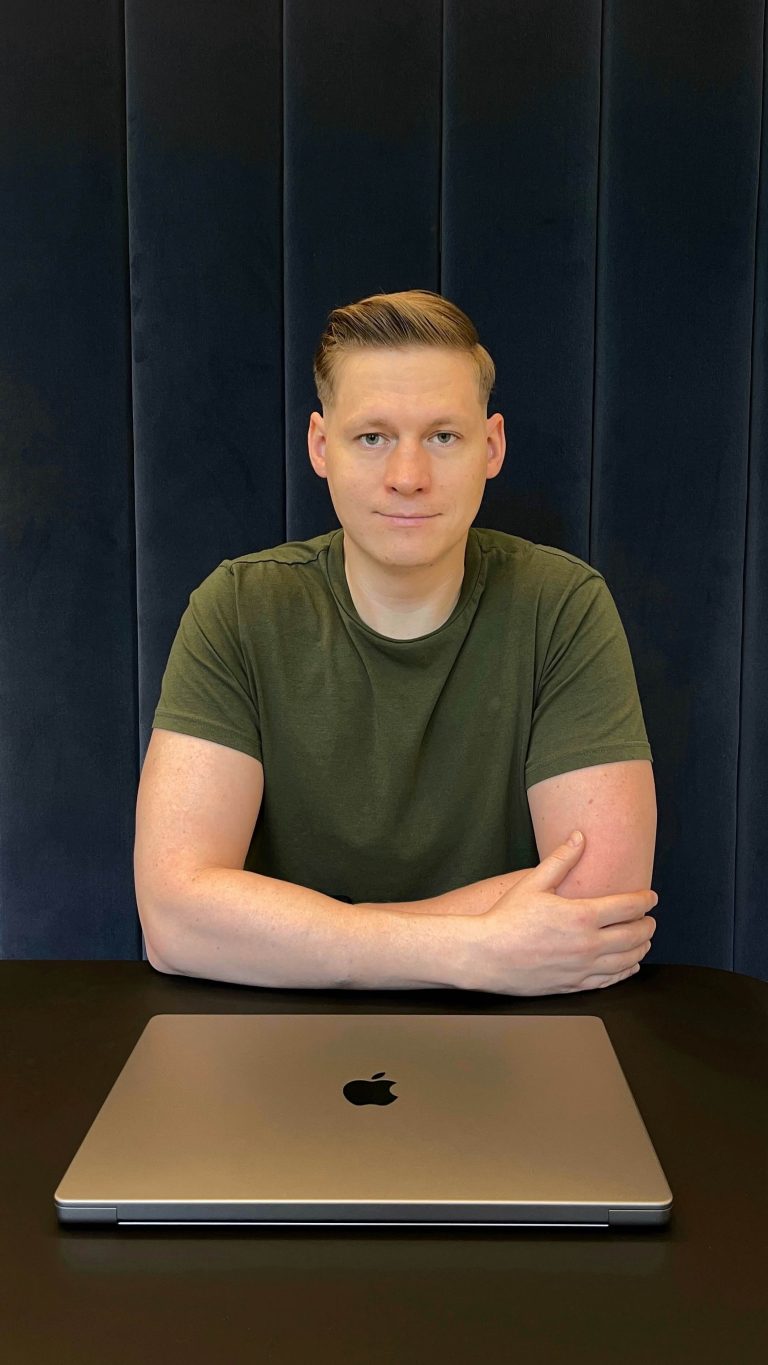Experienced Full Stack Software Engineer with 10+ years in building scalable, AI-driven web applications. Skilled in TypeScript, Golang, cloud infrastructure, and modern frameworks, with a strong focus on product quality, performance, and user experience. Proven track record of leading end-to-end development and delivering impactful, high-quality solutions in fast-paced environments.
Company: Henry AI
We are thrilled to have you join us today, welcome to ValiantCEO Magazine’s exclusive interview! Let’s start off with a little introduction. Tell our readers a bit about yourself and your company.
Roman Martynenko: Thank you so much – I’m really glad to be here.
My name is Roman Martynenko. I’m a software engineer with a background in full-stack and backend development, and over the past several years, I’ve had the opportunity to work across different industries and fast-moving teams. I’ve always been drawn to building systems that solve real problems and make people’s work more efficient.
Right now, I’m part of the team at Henry AI, where we’re focused on using artificial intelligence to streamline the commercial real estate space. It’s a huge industry with a lot of untapped potential for automation, and we’re trying to make a meaningful impact there. It’s been a fascinating journey, and I’m excited to share a bit more about it today.
What emerging technology trends do you believe will have the most profound impact in the next 5-10 years?
Roman Martynenko: Artificial intelligence continues to be the most transformative force across industries. What’s especially notable today is how rapidly AI has progressed from a tool for assistance to a framework for automation. We’re no longer just talking about AI that summarizes a report or answers a question – we’re entering an era of “agentic systems” that can autonomously execute multi-step workflows. That includes gathering data, analyzing it, and even producing final outputs like reports, presentations, or strategic recommendations. It’s a massive leap that’s shifting how organizations think about productivity, staffing, and value creation.
This evolution is particularly impactful in knowledge-heavy sectors like commercial real estate, law, and finance. At a high level, AI is becoming less about adding efficiency to a single task and more about re-architecting entire business processes. Other trends – such as improved compute power, better sensor data, or robotic automation – are accelerating too, but they often serve to enhance what AI can do. What we’re seeing is the early formation of intelligent infrastructure: systems that adapt, reason, and act with minimal input. For organizations, the question is no longer if AI will be used – it’s how thoughtfully and effectively it will be applied.
Can you share a specific technological breakthrough from your company that has the potential to reshape your industry?
Roman Martynenko: One of our core technology achievements is the ability to parse a wide range of commercial real estate data inputs – from structured spreadsheets to unstructured PDFs and images – with a high degree of precision. This is critical because CRE professionals deal with extremely fragmented information: rent rolls, offering memorandums, site maps, market reports, and more. Making sense of that data quickly and accurately is both a technical challenge and a huge operational bottleneck.
By combining computer vision and large language models, we’ve created a flexible system that reads, interprets, and structures this diverse data at scale. The end result is a workflow where users can drop in a variety of files and receive clean, usable outputs – often in the form of presentation materials or data summaries. It saves time and significantly reduces manual effort, allowing teams to focus on client-facing strategy instead of formatting and copy-pasting. While we don’t share exact details of our internal models or pipeline, the practical impact is clear: automation of what used to be tedious, repetitive work.
How do you approach innovation while balancing the need for practicality and market readiness?
Roman Martynenko: At our core, we believe innovation should always be in service of the user. While we’re deeply invested in AI and cutting-edge research, we don’t treat new technology as the solution to every problem. In many cases, a conventional engineering approach can deliver faster, more stable results – and that’s often what users value most. We’re deliberate about when to introduce AI into a product feature. If the AI-based version doesn’t meaningfully outperform a simpler method, we hold off. Predictability and quality come first.
This pragmatic mindset also shapes how we roll out new features. We often start with a version that works well with existing workflows and then layer in more advanced automation behind the scenes as the models improve. In industries like commercial real estate, where trust and consistency are paramount, this staged rollout is essential. It ensures that users see immediate value without being overwhelmed or asked to change how they work overnight. By staying user-focused and engineering-led, we’ve been able to introduce innovation at a pace that actually sticks.
What challenges do you face in integrating cutting-edge technology into existing business models?
Roman Martynenko: One of the biggest hurdles in applying advanced technology – especially AI – is that the pace of progress itself creates uncertainty. What looks like a competitive advantage today may be obsolete six months from now. This constant evolution forces us to design systems that are modular and adaptable. Our team spends a lot of time anticipating where the tech is heading so we can avoid being locked into solutions that won’t scale or stay relevant. Flexibility in architecture and planning is not optional – it’s survival.
Beyond the tech side, there’s also a cultural challenge. Many industries, commercial real estate included, are built on longstanding personal relationships, proprietary workflows, and institutional knowledge. Convincing professionals in these fields to trust AI is a gradual process. They want to understand how the system works, what it’s doing, and how it handles their data. That’s why we position our platform as a collaborative assistant, not a replacement. It takes on the manual load so analysts and brokers can focus on higher-order tasks. Trust, transparency, and integration are key – and earning them takes time and careful execution.
How do you foster a culture of innovation within your organization to stay ahead in the tech race?
Roman Martynenko: Innovation starts with culture, and we’ve built one that is flat, collaborative, and engineering-driven. Every member of the team is encouraged to explore new ideas, take initiative, and work across boundaries. We don’t believe in rigid hierarchies or siloed departments. Instead, we operate like a studio of senior builders who collectively shape the roadmap. This structure speeds up experimentation and turns good ideas into real prototypes without weeks of meetings or red tape.
What also helps is our emphasis on direct user value. We don’t pursue innovation for its own sake – the litmus test for every feature is whether it solves a real problem or improves a key workflow. That clarity gives engineers a strong sense of purpose and direction. They’re not building for a theoretical use case; they’re delivering tools that help professionals move faster and do better work. This balance – autonomy in the process, discipline in the outcomes – is what fuels meaningful innovation. It allows us to stay agile while staying grounded in what matters to our users.






